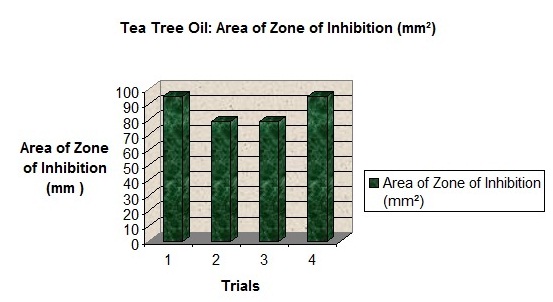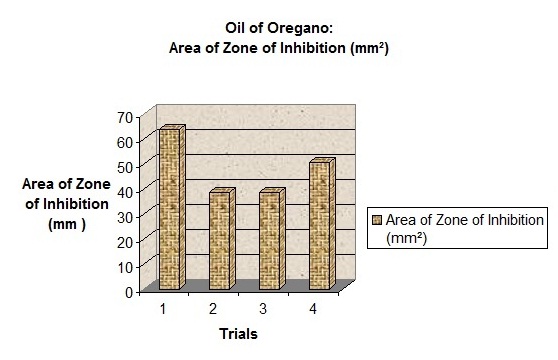





Published on Sep 12, 2023
The purpose of my project is to find out if the natural antibiotics garlic, tea tree oil, and oil of oregano are as good at killing bacteria as the synthetic antibiotic erythromicen.
Many people believe that synthetic antibiotics are made specifically to fight bacteria and are more effective than natural antibiotics. These antibacterial drugs either kill the bacteria or they stop the bacterial growth, which allows the body’s immune system to heal from disease or infection. Originally, antibiotic drugs were produced from materials found in nature. Now, antibiotic drugs are all produced in the lab, synthetically
. The problem with these pharmaceutical antibiotics is that many times they’re not being used properly. For example, people will sometimes take antibiotics for viral infections, even though antibiotics can’t treat viral infections. Other times, people will only take a part of their prescribed dose. This misuse creates drug-resistant bacteria or “superbugs”. It is estimated that 8000 Canadians die each year from antibiotic-resistant infections. (www.cihr-irsc.gc.ca/e/46057.html Canadian Institutes of Health Research, 5/12/12)
Natural antibiotics work by not just killing the bacteria, but also improving the body's natural ability to fight off bacterial infections in the future. Unlike pharmaceutically produced antibiotics, drug resistance does not develop against naturally occuring antibiotics. Also, natural antibiotics will not kill the useful bacteria that live in our bodies and help us break down the food we eat.
The purpose of my project is to find out if the natural antibiotics garlic, tea tree oil, and oil of oregano are as good at killing bacteria as the synthetic antibiotic erythromycin.
I think the synthetic anibiotic erythromycin will be better at killing bacteria than any of the natural antibiotics.
1. Garlic
2. Tea tree oil (100% pure)
3. Oil of oregano (100% pure)
4. Erythromycin antibiotic sensitivity discs
5. Blank sterile discs
6. 20 agar plates (TSA tryptic soy agar petri dishes)
7. Rubbing alcohol
8. Tweezers
9. Pestle
10. Bowl
11. Sterile swab applicators
12. Sterile gloves
13. Tape
14. Marker
1. Sterilize the bowl, pestle, and the tweezers with rubbing alcohol.
2. Label the agar plates: 4 for the garlic, 4 for the tea tree oil, 4 for the oil of oregano, 4 for the Erythromycin antibiotic, and 4 for the control.
3. Refrigerate the agar plates.
4. The next morning, take a sterile swab and wipe the inside of your mouth. Then, streak the agar with the swab. Repeat this step for each of the twenty agar plates, using a new sterile swab each time.
5. Tape the petri dishes closed and incubate them in a dark drawer at room temperature for 48 hours.
6. After 48 hours, observe the bacterial growth. Continue to observe the bacterial growth until a week has passed.
7. Wearing sterile gloves and using fresh garlic cloves, peel and crush them with a sterile pestle in the sterile bowl. With the sterile tweezers soak four sterile discs in the liquid and place one in each of the petri dishes labelled garlic.
8. Sterilize the forceps again and soak four sterile discs in the 100% pure tea tree oil and place one in each of the petri dishes labelled tea tree oil.
9. Sterilize the forceps again and soak four sterile discs in the 100% pure oil of oregano and place one in each of the petri dishes labelled oil of oregano.
10. Sterilize the forceps again and place an Erythromycin antibiotic disc in each of the petri dishes labelled Erythromycin.
11. Sterilize the forceps again and place a blank sterile disc in each of the petri dishes labelled control.
12. Incubate all the plates in a dark drawer at room temperature for 24 hours.
13. Check the petri dishes for zones of inhibition (the circular region around the paper disc) every 24 hours.
14. After 5 days, measure the diameters of the zones of inhibition on all the petri dishes and record the data.
15. Use the equation for the area of a circle to find the area of each zone of inhibition. Average all the areas for each of the antibiotics.



Some natural antibiotics can be as effective at killing bacteria as synthetic (pharmaceutical) antibiotics. Although, my hypothesis was correct and the synthetic antibiotic, erythromycin, was the most effective at killing bacteria, the natural antibiotic tea tree oil was almost as effective. The erythromycin was the most effective with the area of the zone of inhibition measuring an average of 103.86 mm². The tea tree oil was a close second, with the area of its zone of inhibition measuring an average of 86.59 mm². The oil of oregano was not as effective, ranking third, with an average zone of inhibition area of 47.17 mm². The garlic had no effect on the bacteria and no zone of inhibition formed in any of the four trials.
According to my experiment, tea tree oil is a very good alternative to using synthetic antibiotics. It was only slightly less effective than the erythromycin. If I had given it more time (more than 5 days), it may have become equally as effective. Some natural supplements can take longer to take their full effect. It would be interesting to do an experiment where the results are recorded for a longer period of time to make sure that the antibiotics have taken their full effect. Also, in my experiment, I grew the bacterial culture by swabbing my mouth. I do not know what kind of bacteria grew in the petri dishes. It would be interesting to do an experiment on specific strains of bacteria like E. coli and others, to be able to tell how well different natural antibiotics work on different kinds of bacteria. Also, it would be interesting to do a more detailed experiment with many different natural antibiotics including; dandelion extract, raw honey, grapefruit seed extract, and olive leaf extract, to see how effective each one is in killing different kinds of bacteria. Garlic has been used for thousands of years to treat infections, so I’m not sure why it didn’t have any effect on my bacteria. Maybe , I should have added some water to the crushed garlic to make it more liquid.
More research should to be done on the power of herbs and other natural substances as alternatives to synthetic antibiotics. Using these natural antibiotics can help reduce drug-resistant bacteria and save lives.
Cohen, M. (2001). Analysis of Ordinal Dental Data. Jornal of Dental Research , 309-313.
Davenport, T. (n.d.). Top 10 Common Dental Problems . Retrieved October 22, 2012, from About.com: http://dentistry.about.com/od/toothmouthconditions/tp/10-Common-Dental-Problems.html
Elverne M Tonn, D. (2012, May 14). Tooth Plaque Causes, Preventions, and Treatements . Retrieved October 22, 2012, from WebMD: http://www.webmd.com/oral-health/guide/plaque-and-your-teeth
Periodontology, A. A. (n.d.). Types of Gum Diesease. Retrieved October 22, 2012, from Perio: http://perio.org/consumer/types-gum-disease.html